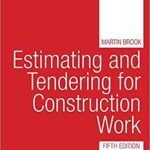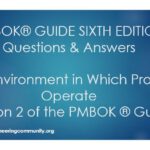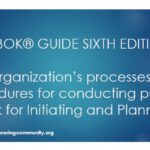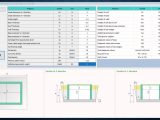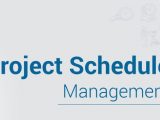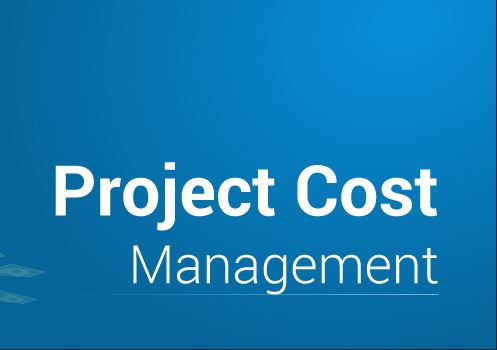
Project Cost Management Summary 6th Edition
27 June 2020Project Cost Management Summary 6th Edition
- Cost estimates include the identification and consideration of costing alternatives to initiate and complete the project.
- Cost trade-offs and risks should be considered to achieve optimal costs for the project.
- The accuracy of a project estimate will increase as the project progresses through project life cycle.
- In project initiation phase have a rough order of magnitude (ROM) estimate in the range of (-25% to +75%). Later in projects when more information is known definitive estimate could narrow the range to (-5% to +10%).
- Analogous Estimating, Parametric Estimation, Bottom-UP Estimating & Three-Point Estimating. In schedule summary.
- Reserve Analysis. In schedule summary.
- Cost of Quality: Assumptions about costs of quality may be used to prepare the estimates.
- Estimate Costs Outputs:
✓ Cost Estimates:
➢ Cost estimates include quantitative assessments of the probable costs required to complete project work and contingency amounts to account for identified risks, and management reserve to cover unplanned work.
➢ Cost estimates can be presented in summary form or in detail.
✓ Basis of Estimates:
➢ Supporting documentation should provide a clear and complete understanding of how the cost estimate was derived (assumptions, constraints, …).
- Determine Budget is the process of aggregating the estimated costs of individual activities or work packages to establish an authorized cost baseline.
- Project budget includes all the funds authorized to execute the project.
- Business Documents:
✓ Business case: identifies the critical success factors for the project like financial success factors.
✓ Benefits management plan: includes the target benefits, such as net present value calculations, timeframe for realizing benefits, and the metrics associated with the benefits.
- Cost Aggregation: Cost estimates are aggregated by work packages in accordance with the WBS. The work package cost estimates are then aggregated for the higher component levels of the WBS and ultimately for the entire project.
- Historical Information Review:
✓ Reviewing historical information can assist in parametric or analogous estimates.
✓ Historical information may include project characteristics (parameters) to develop mathematical models to predict total project costs.
- Funding limit Reconciliation:
✓ The expenditure of funds should be reconciled with any funding limits on the commitment of funds for the project.
- Financing: Financing entails acquiring funding for projects for long lasting projects. External funding may require certain requirements.
- Cost Baseline:
✓ Approved version of the time-phased project budget, excluding any management reserves. is used as a basis for comparison to actual results.
✓ The work package cost estimates, along with any contingency reserves estimated for the work packages, are aggregated into control accounts. The summation of the control accounts makes up the cost baseline.
✓ Time-phased view of the cost baseline is typically displayed in the form of an S-curve.
- Project Funding Requirements : Total funding requirements and periodic funding requirements are derived from the cost baseline.
- Any increase to the authorized budget requires an approved change.
- Earned value analysis (EVA):
✓ compares the performance measurement baseline to the actual schedule and cost performance.
✓ EVM integrates the scope baseline with cost and schedule baselines to form the performance measurement baseline (PMB).
- Variance Analysis:
✓ Cost and schedule variances are the most frequently analyzed measurements.
✓ Cost performance measurements are used to assess the magnitude of variation to the cost baseline and decide whether corrective or preventive action is required.
- Trend Analysis:
✓ examines project performance over time to determine if performance is improving or deteriorating.
✓ Graphical analysis techniques are valuable for understanding performance and comparison to future performance goals in the form of BAC vs EAC.
✓ Charts: In earned value analysis, three parameters of planned value, earned value, and actual cost can be monitored and reported.
✓ Forecasting: Project team may develop a forecast for the estimate at completion (EAC) that may differ from the budget at completion (BAC).
- Reserve Analysis:
✓ Reserve analysis is used to monitor the status of contingency and management reserves for the project to determine if these reserves are still needed or if additional reserves need to be requested.
✓ This reserve may be used as planned to cover cost of risk response.
✓ when opportunities are captured and resulting in cost savings, funds may be added to the contingency amount, or taken from the project as margin/profit.
- To-Complete Performance Index (TCPI):
✓ Measure of the cost performance that is required to be achieved with the remaining resources in order to meet a specified management goal expressed as the ratio of the cost to finish the outstanding work to the remaining budget.
- Work Performance Information:
✓ Includes information on how the project work is performing compared to the cost baseline.
✓ Variances in the work performed and the cost of the work are evaluated at the work package level and control account level.
- Equations:
✓ Earned value analysis (EVA): 4 Key terms.
➢ PV =Planned Value: The value of the work planned to be completed to a point in time, usually the data date, or project completion.
➢ EV=Earned Value: The planned value of all the work completed (earned) to a point in time, usually the data date, without reference to actual costs.
➢ AC=Actual Cost : The actual cost of all the work completed to a point in time, usually the data date.
➢ BAC=Budget at Completion: The value of total planned work, the project cost baseline.
✓ Variance Analysis:
➢ Schedule Variance (SV): The difference between Earned Value and Planned Value.
❖ SV = EV – PV
❖ SV< 0, Behind schedule
❖ SV>0, Ahead of schedule
❖ SV=0, On schedule
➢ Cost Variance (CV): The difference between Earned Value and Actual Value.
❖ CV = EV – AC
❖ CV< 0, Over budget (Over planned cost)
❖ CV>0, Under budget (Under planned cost)
❖ CV=0, On budget (On planned cost)
➢ Schedule Performance Index (SPI): A measure of schedule efficiency expressed as the ratio of earned value to planned value.
❖ SPI = EV / PV
❖ SPI< 1, Behind schedule
❖ SPI> 1, Ahead of schedule
❖ SPI= 1, On schedule
➢ Cost Performance Index (CPI): A measure of the cost efficiency of budgeted resources expressed as the ratio of earned value to actual cost.
❖ CPI = EV / AC
❖ CPI< 1, Over planned cost
❖ CPI> 1, Under planned cost
❖ CPI= 1, On planned cost
✓ Trend Analysis:
➢ Estimate at Completion (EAC): The expected total cost of completing all work expressed as the sum of the actual cost to date and the estimate to complete.
❖ EAC = BAC/CPI If the CPI is expected to be the same for the remainder of the project.
❖ EAC = AC + BAC – EV If future work will be accomplished at the planned rate.
❖ EAC = AC + Bottom-up ETC If the initial plan is no longer valid.
❖ EAC = AC + [(BAC – EV) / (CPI x SPI)] If both the CPI and SPI influence the remaining work.
➢ Estimate to Completion (ETC): The expected cost to finish all the remaining project work.
❖ ETC = EAC – AC Assuming work is proceeding on plan, the cost of completing the remaining authorized work.
❖ ETC = Re-estimate Re-estimate the remaining work from the bottom up.
➢ Variance at Completion (VAC): The estimated difference in cost at the completion of the project.
❖ VAC = BAC – EAC
❖ Positive = Under planned cost
❖ Neutral = On planned cost
❖ Negative = Over planned cost
✓ To-Complete Performance Index (TCPI):
➢ A measure of the cost performance that must be achieved with the remaining resources in order to meet a specified management goal, expressed as the ratio of the cost to finish the outstanding work to the budget available.
➢ TCPI = (BAC – EV) / (BAC – AC) The efficiency that must be maintained in order to complete on plan ❖ Greater than 1.0 = Harder to complete
❖ Exactly 1.0 = Same to complete
❖ Less than 1.0 = Easier to complete
➢ TCPI = (BAC – EV) / (EAC – AC) The efficiency that must be maintained in order to complete the current EAC.
❖ Greater than 1.0 = Harder to complete
❖ Exactly 1.0 = Same to complete
❖ Less than 1.0 = Easier to complete
- Important Notes:
➢ Three-point estimate is more accurate than parametric estimate.
➢ Assessment is proper action that should be taken by project manager.
➢ Regression analysis >>>> based on one line estimation.
➢ Parametric estimate >>>> depend on expert judgement technique.
➢ Light weight estimation >>>> high level forecast project.
➢ Scope and schedule are adjusted to stay with cost constraint >>>> Strick budget.

